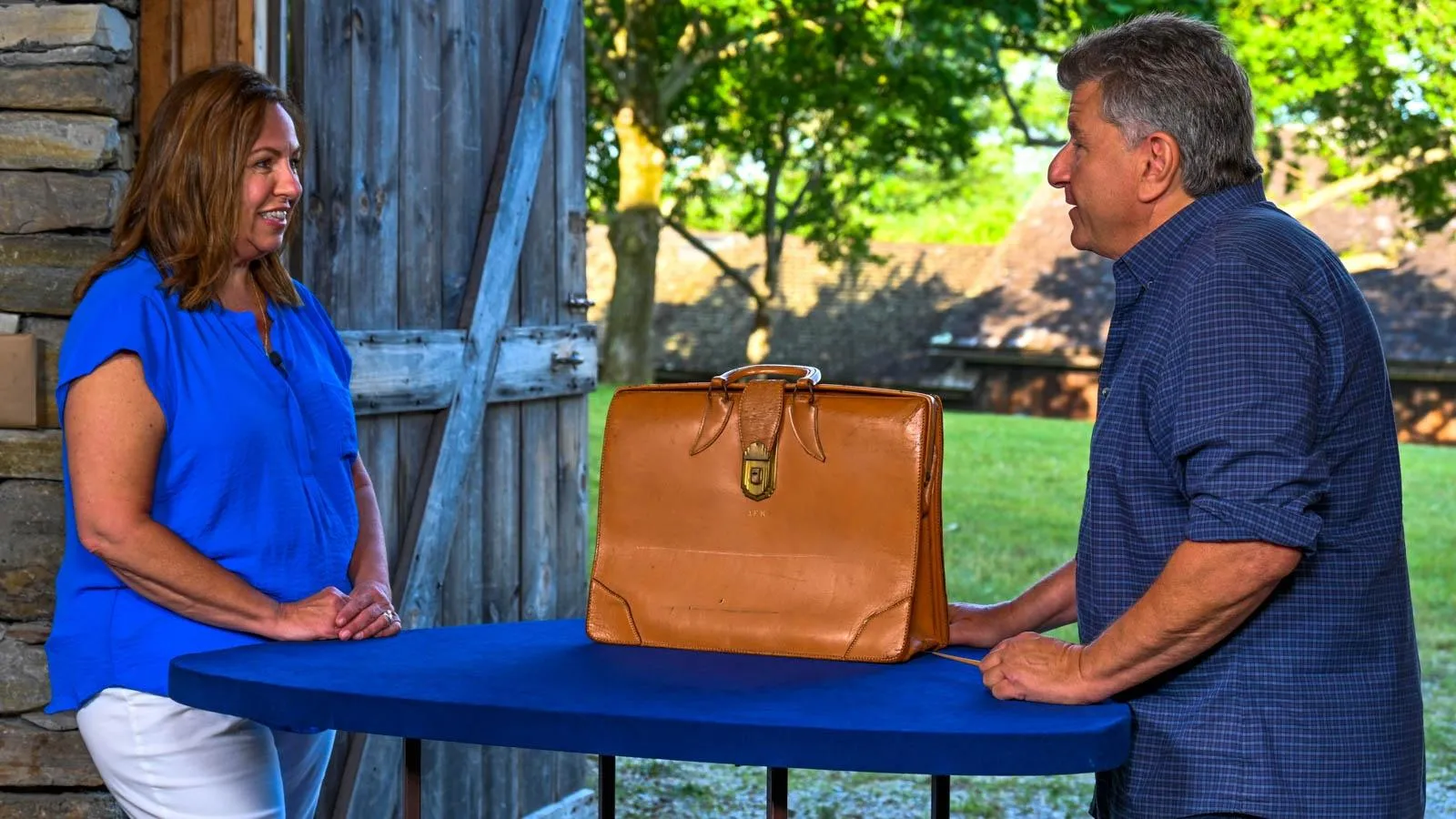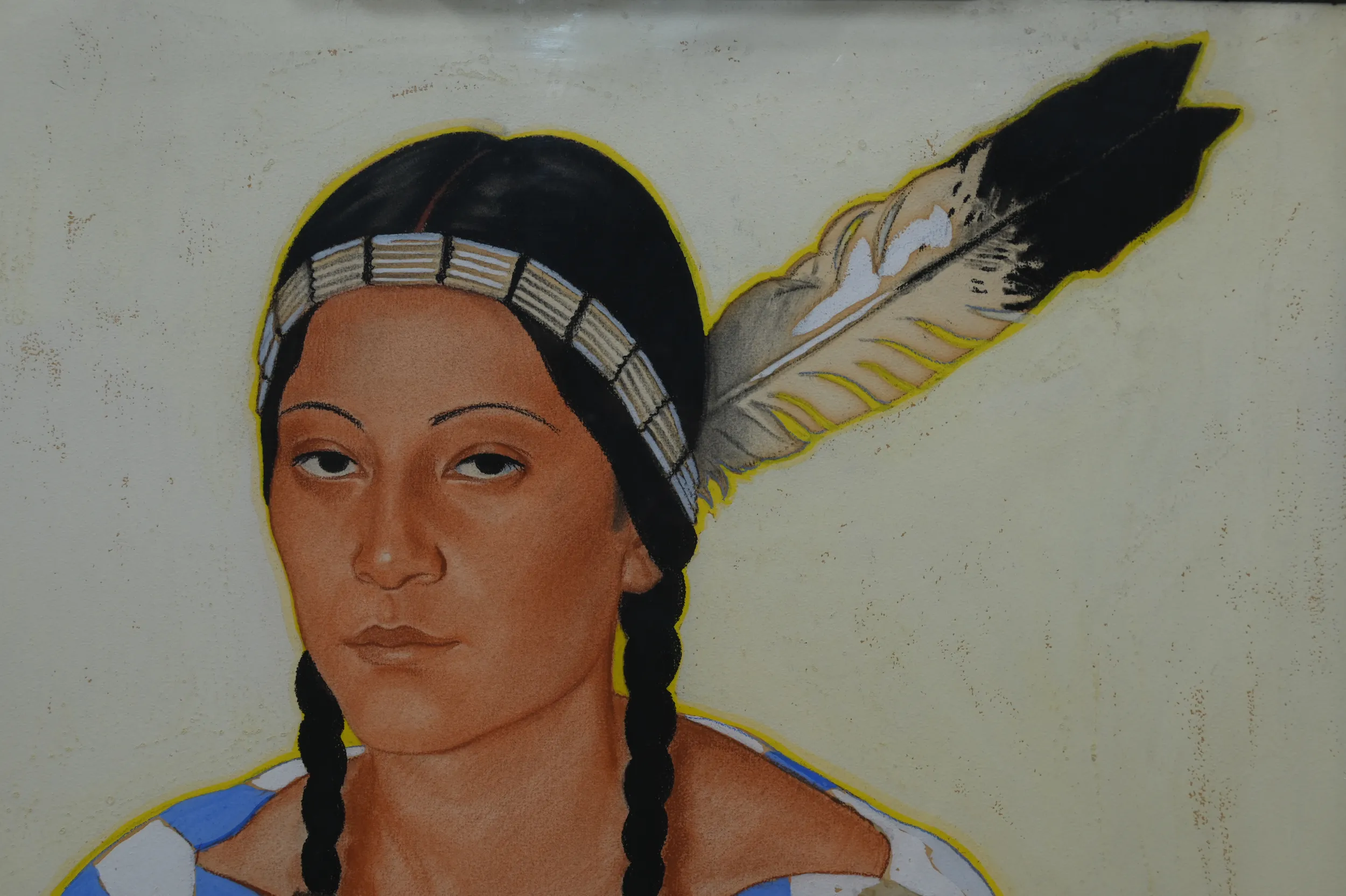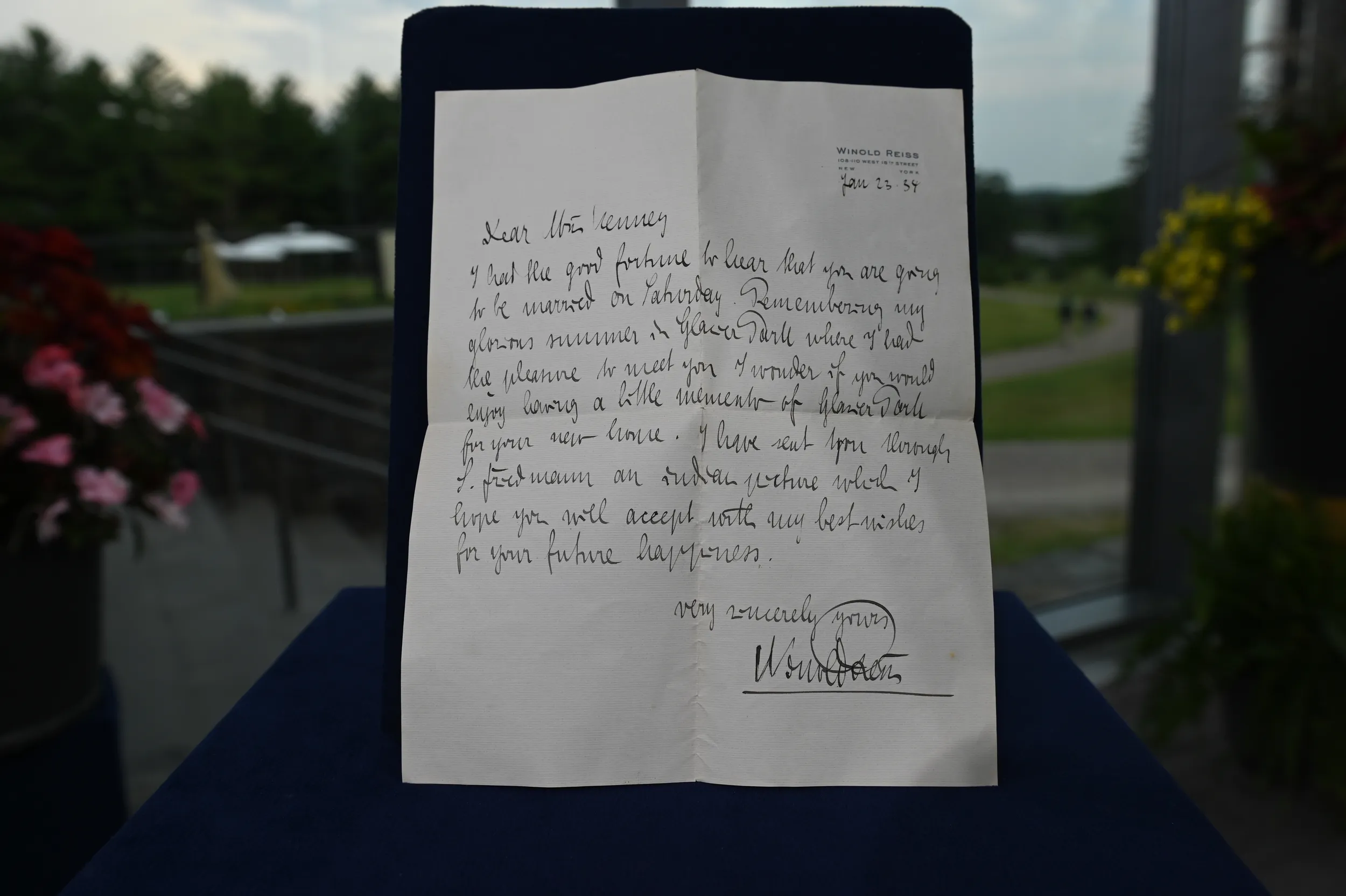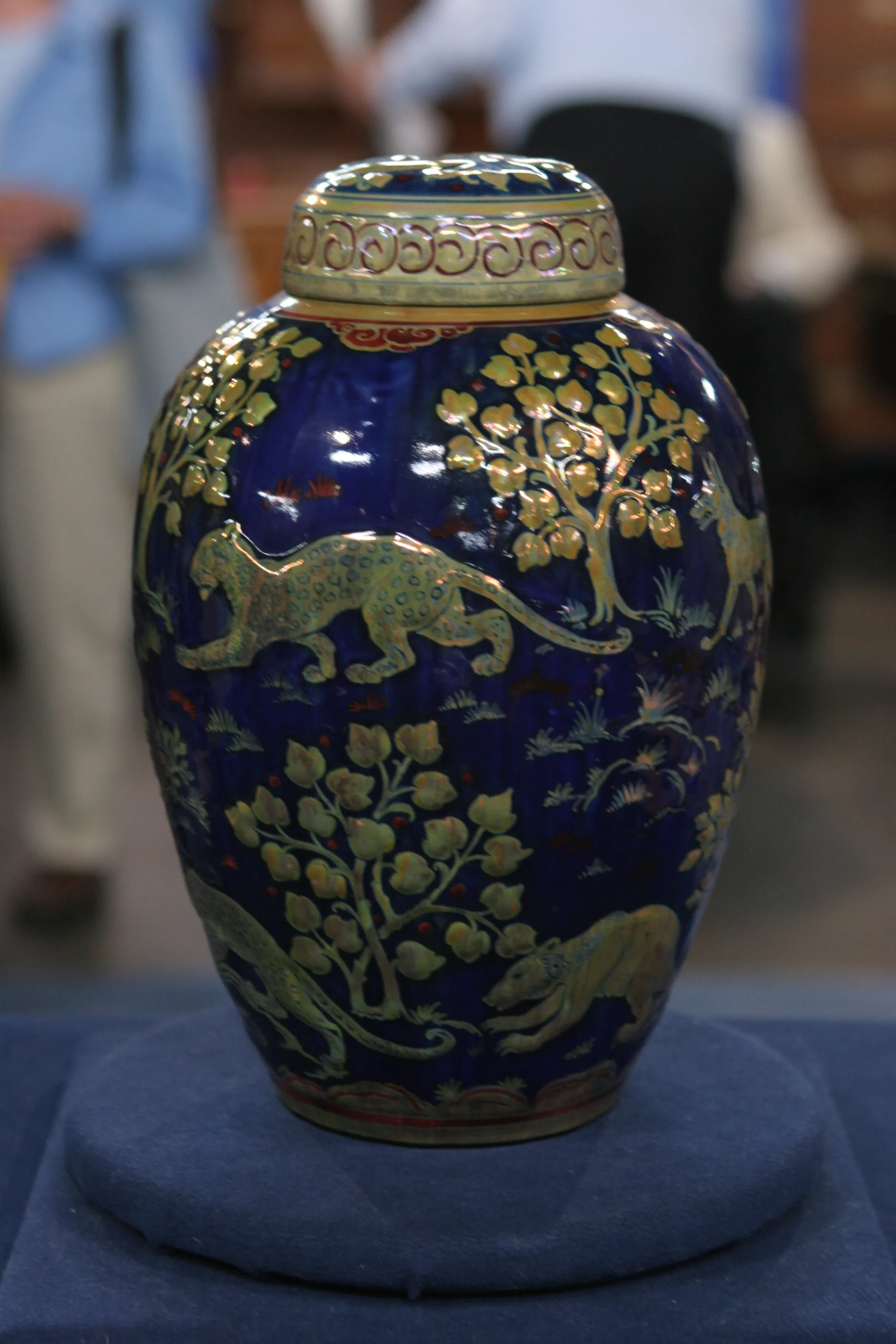GUEST: My grandparents were married in 1934 and Winold "Reese," the painter, gave this letter and this painting to them.
APPRAISER: Um, the letter's a little il, illegible, but basically it's a...
GUEST: It's a little hard to read. But basically it, it just explains to them to enjoy Glacier Park this summer and congratulations on their wedding.
APPRAISER: Is the letter dated at all?
GUEST: Um, yes, 1934.
APPRAISER: Mm-hmm.
GUEST: And that's when he gave the painting to them for their wedding.
APPRAISER: All right, so I think it's fair to assume that it was done probably in the preceding year or so.
GUEST: Yes.
APPRAISER: So the ear, early 1930s. What do you know about the artist?
GUEST: Well, I know Winold "Reese" was a pretty big painter Of the Blackfeet Indians.
APPRAISER: I believe, I've been told it's Winold "Rice" rather than "Reese."
GUEST: Oh, "Rice."
APPRAISER: I had a time when I used to say "Reese," as well. He came to the United States in 1913, when he was 26 years old, and brought with him a Modernist sensibility and a very broad German accent. He had the immigrant experience, so he, he embraced the concept of otherness.
GUEST: Mm-hmm.
APPRAISER: And I think that drew him to people who were more in the margins of mainstream society. And, in this case, he did the Indigenous peoples. Do you know who the subject is?
GUEST: Her name is Agnes. Morning Star, I believe, was her Indian name.
APPRAISER: And I see there is a little note on the back that describes her as a woman of "grace, beauty, and education," and I...
GUEST: Yes.
APPRAISER: I feel that come through in, in the portrait, too.
GUEST: Yes, very much so.
APPRAISER: And you can see in the painting, as well, there's a great deal of empathy and respect for the subject.
GUEST: Mm.
APPRAISER: Did you do any research into his movements in the United States, or do you know where she would have been located?
GUEST: Um, out West so, Midwest.
APPRAISER: Well, more specifically, Montana. And he started going there in 1920 and went there from 1920 to 1948. And he was sponsored by the, the Great Northern Railroad. And they would use images like this for marketing, for calendars, that kind of thing. They'd turn them into lithographs. He was quite the Renaissance man, because he didn't just do paintings. He did interior designs. He designed furniture.
GUEST: Wow, I didn't know that.
APPRAISER: He did posters. He did book illustrations.
GUEST: I...
APPRAISER: He did all these things. And, of course, he was a magnificent painter, too. The blue and white is, is gouache. The rest of it, the, the face and here is pastel, so it's mixed media.
GUEST: Okay.
APPRAISER: And he's done it on a Whatman drawing board, which he typically, typically used, as well.
GUEST: Yeah.
APPRAISER: So this is very characteristic of his work. Uh, but it's wonderful to have it with the letter.
GUEST: Yes.
APPRAISER: That's great provenance.
GUEST: Yeah.
APPRAISER: And I know this has been illustrated in books, as well. At auction, I feel pretty comfortable in giving it, uh, an estimate of $50,000 to $80,000.
GUEST: Oh, my gosh! (laughs) Really?
APPRAISER: Yeah, absolutely.
GUEST: Wow. (chuckling): That's exciting. Wow.
APPRAISER: I don't think you should insure it for anything less than $100,000.
GUEST: Wow, really?
APPRAISER: So I would get that on your insurance policy.
GUEST: Oh, my gosh, okay. (laughs): I will do that.
APPRAISER: Okay. Yeah.
GUEST: I've always loved it, so...
APPRAISER: Really made my day, so thank you.
GUEST: Thank you!













